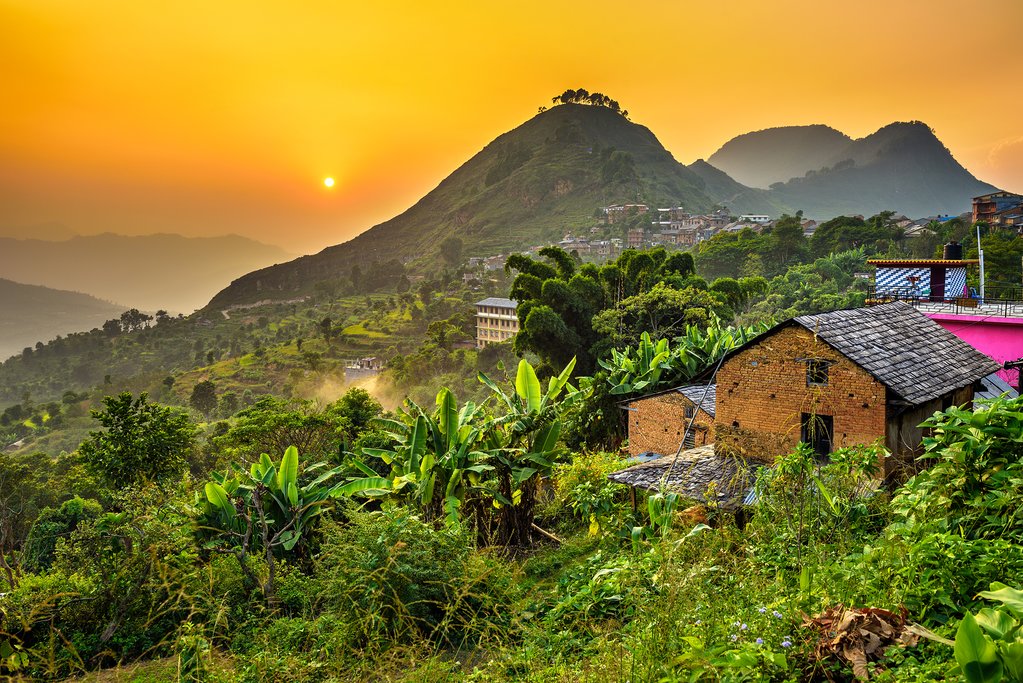Homestay Experience in Nepal
Nepal’s varied population with equally diverse customary and cultural approaches can best be explored with trekking across the rural sites of country. Communication with the local inhabitants to learn about their lifestyle and enjoy social practices balance when travelers choose to live together with the locals. Staying at a homestay in Nepal might just be what you are looking for. The traditional way of lodging has arose as an remarkable attraction for travelers visiting to Nepal since few years. These homestays do not only provide only a bed to sleep and food to eat but also a true Nepalese living practice. They allow tourists to witness how people in Nepal devote their daily lifestyle and also to join in it.
Announced by the Nepal Government in 2011, homestay tourism was introduced to provide lodging to the one million tourists that were expected to arrive in the country that year. In such a situation, the shortage of appropriate accommodation would have been a chaos. Therefore to lessen with this disaster, homestays were greatly prioritized as this was the best substitute to develop the setup quickly and competently instead of advancing in separate structures.
To format a homestay, locals need to make some basic changes to toilet and bathroom facilities moreover additional decorations and reconstructions. This does not need much time to achieve and also puts less financial load on locals to build up the structure. Thus, the traditional tendency of exploring Nepal by staying in lodges or camping on open grounds was much replaced by homestays. This essentially opened accesses to many fascinating destinations in the country that lacked accommodations. Trekking in Nepal also saw a new method to introduce Nepal and Nepalese culture to the world in the most appropriate manner.
Panauti Community Homestay Tourists occasionally may not be able to get their own secluded room unlike any other hotels in the city areas and have to share with others but this is not something they should be afraid of. Likewise, attached restroom should not be anticipated. However, they will be very prized memoirs you will be taking back home. In the meal, one can taste delightful cuisines which are way more hygienic as you will be served each and everything produced from the vicinity. You will experience hospitality in its best practice where it is served from the heart. Sirubari in Syangja and Ghalegaon in Lamjung were the foremost pioneers to start this kind of arrangement to trekking. Later, other places like Kathmandu, Lalitpur, Kavrepalanchowk, Chitwan, Makwanpur, Gorkha, Ilam, Palpa, Kailali, Kalikot and Nuwakot started to expedite guests with homestays.

The home stay family will welcome, give you an abode to sleep and share their meals. There is no menu but the same food as what the family is eating. The home stay family must carry on with their life, such as looking after their animals and farm, and so you will need to be able to entertain yourself at times like a good book, for example, would be one idea. One can also discover the community to see things that are uncommon, leaving you astounded for those who live in a more urban area. Trying to connect with locals may also bring amazements that you didn’t assume. The objective of these lodgings are to let tourists acquaint with a comprehensive local life setup to get lost in a different environment for a whole new familiarity of life.
The typical life in the rural area is early dawn starts around 5 AM, and early nights 9 pm. Please be conscious, and do not keep your host up late at night.
Throughout the home stay, there are numerous things that you can do, such as hiking in the surrounding hills, visiting the nearby communities and swimming in the rivers. You can also follow your home stay host family as they go about their daily tasks.
The home stay family may not speak English. People in the local village may have basic English. Particularly the younger members, who like to try out the English that they have learnt at school may come in front. You may thus wish to have an English speaking guide to accompany who would be able to act as an interpreter, as well as leading you on hikes in the area and answer your queries regarding the country lifestyle.
People get a better insight of the local livelihood and often become representatives of the place to refer other tourists from their country. This kind of idea is also appropriate for backpackers as they can discover more of the Himalayan country with limited budget. This also endorses the use of local resources and forms a major component of eco-tourism.
Community homestays and private homestays are two arrangements implemented in Nepal which signify the usage of either the community building or private houses to provide accommodation. Usually, bed and breakfast are provided in homestays, with meals upon request.
Before going on a country home stay, it is required that you attend a briefing workshop in our office in Kathmandu. We will familiarize you on what to expect during your visit. We will let you know about the l behavior such as correct dress whilst you are at your home stay, including the dos and don’ts such as not entering the kitchen without consent. We will also give you a speedy lesson in some basic Nepalese communication to help you during your stay. This is also your chance to ask us any queries before you make your trip.
Homestay trekking eases the local families to earn by working at their homes, and at the same time allows tourists to enjoy the warmth of the local people, while learning and exchanging cultural basics. These days, the notion of homestay has even grown to city areas differing to the early purpose of the program. However, each form of homestay is valuable in the same way that the original program meant for.





